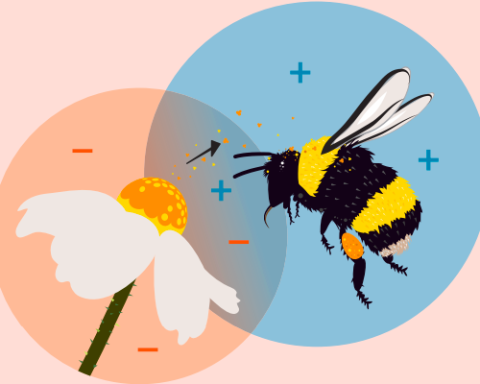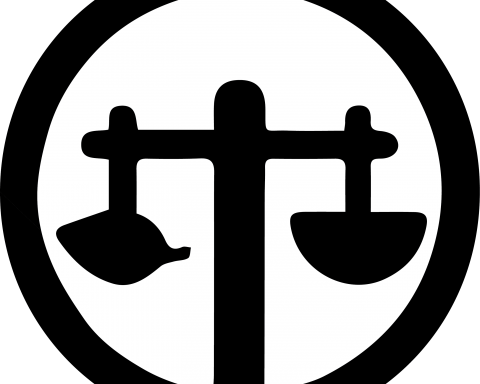By Marjorie Harris BSc, IOIA VO, P.Ag.
CAN/CGSB 32.310-2015
5.2.1 Measures shall be taken to minimize the phsyical movement of prohibited substances onto organic land and crops from: a) adjacent areas
If unintended contact with prohibited substances is possible, distinct buffer zones or other features suf cient to prevent contamination are required:
Clause 5.2 Environmental Factors
Clause 5.2.2
Buffer zones shall be at least 8 m (26 ft 3 in) wide;
Permanent hedgerows or windbreaks, articial windbreaks, permanent roads or other physical barriers may be used instead of buffer zones;
Recent studies by the BC Ministry of Agriculture show that pesticide air blaster applicators create a pesticide residue burden of 10% concentration in the spray drift 30 feet from the application site! A vegetated buffer can be a multi-functional operational bonus for the organic enterprise, in addition to meeting the COR standard requirements for preventing unintended contamination by prohibited substances via air flows.The primary function of the vegetated buffer is to stop dust particulates and spray drift. Seven key features are considered in the design plan: height, density, orientation, length, width, continuity/uniformity, and cross-sectional shape. As such, trees and shrubs are layered to either trap and capture air flow by dense foliage porosity or to modify air flow into a chimney to cause dispersion and dilution.
The outer vegetated buffer face can work to shield and reduce pollution from incoming spray drift, dust, and odours, while the inner vegetated buffer face can provide habitat for sacrificial crops and beneficial organisms. Windbreaks, shelterbelts, and vine covered trellis/fencing can all be designed as effective vegetative buffers to address environmental interface pollution issues.
Conifer trees, especially the wild-type Excelsa Cedar, have been found to have the best type of density for providing air flow porosity, and year round protection from interface pollution of all kinds. In dry areas like the Southern Okanagan these moisture dependent hedges will require some drip irrigation and that cost needs to be balanced with the overall value to the organic operation.
The inner facing surface of the vegetated buffer can be companion planted with flowering plants and shrubs to increase overall biodiversity, and to provide food sources and habitats for beneficial, birds, insects, amphibians and native pollinators. A healthy population of beneficial organisms can go a long way to increasing crop yields and controlling garden pests.
A flower packed habitat will attract nectar-feeding insects such as bumbles bees, butterflies and hoverflies, which lay their eggs where there is an abundant supply of aphids for their larvae to feed on. Studies have demonstrated that alfalfa, mustard, yarrow, coriander, cosmos, French marigold, and nasturtium all attract an increase in a wide variety of predatory ladybugs.
Also, consider planting native flowers, plants, and herbs to boost the habitat biodiversity for native pollinators. Often, hybrid plants with large, showy flowers have little or no pollen.
One of the best plants for attracting native pollinators is hyssop. Hyssop’s strong aerosol aroma also helps to protect brassicas by masking their scent from white cabbage butterflies. Members of the mint family are favorites of Tachinid flies, hoverflies, and parasitic wasps; try planting mint, lemon balm, catnip, and pennyroyal.
Todd Carnahan, author of Gardening with Native Plants, recommends the drought tolerant ocean spray brush, nodding onions, and kinnikinnick, which doubles as a great ground cover and produces red berries in the fall.
The vegetated buffer will provide nesting areas for solitary bees and many other beneficial organisms. Remember to construct some rocky areas, puddles and muddy patches too catch fresh water to meet their daily water needs.
Buffer Benefits:
- Enhances crop yields
- Provides habitat for biodiverse beneficials (birds, insects, amphibians)
- Reduces wind erosion
- Shelters livestock, crops and structures (homes outbuildings, roads)
- Captures water runoff, nutrients, increase moisture resilience
- Filters and reduces spray drift, dust and help control odors
- Provides wildlife travel corridors and habitat
- Increases moisture capture
- Reduces light and noise pollution
The good news for those who would like to explore the value in establishing vegetated buffers is that funding is available through the Environmental Farm Plan Program to offset some of the major costs associated with risk assessment, design, and planting, making the application process all the more worthwhile.
The Environmental Farm Plan (EFP) Program BMP funding is managed through ARDCORP as follows:
Whole farm initial risk assessment is free and completed with the help of an EFP Planning Advisor. The vegetative buffer design and plan is required to implement a vegetative buffer and is covered up to $2000. This can be completed by an EFP Planning Advisor or qualified professional.
Once the plan is approved, under the EFP BMP program, producers can apply for a cost share incentive of 60% up to $15,000 for installing a vegetative buffer. A guidebook entitled Vegetative Buffers for Intensive Agricultural Operations in British Columbia will be published later in 2016.
For further information about the funding program and the soon to be released guidebook please contact: David Trotter, M.Sc., P.Ag. | Agroforestry | Sector Development Branch, BC Ministry of Agriculture | p: 604-556-3148| cell: 778-549-6641 | david.trotter@ gov.bc.ca.







